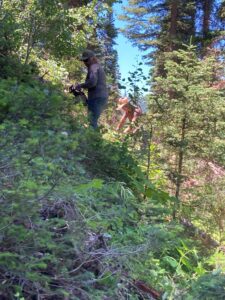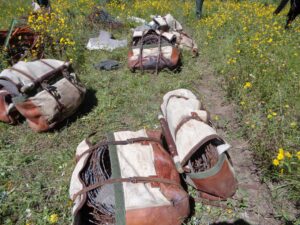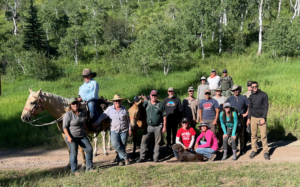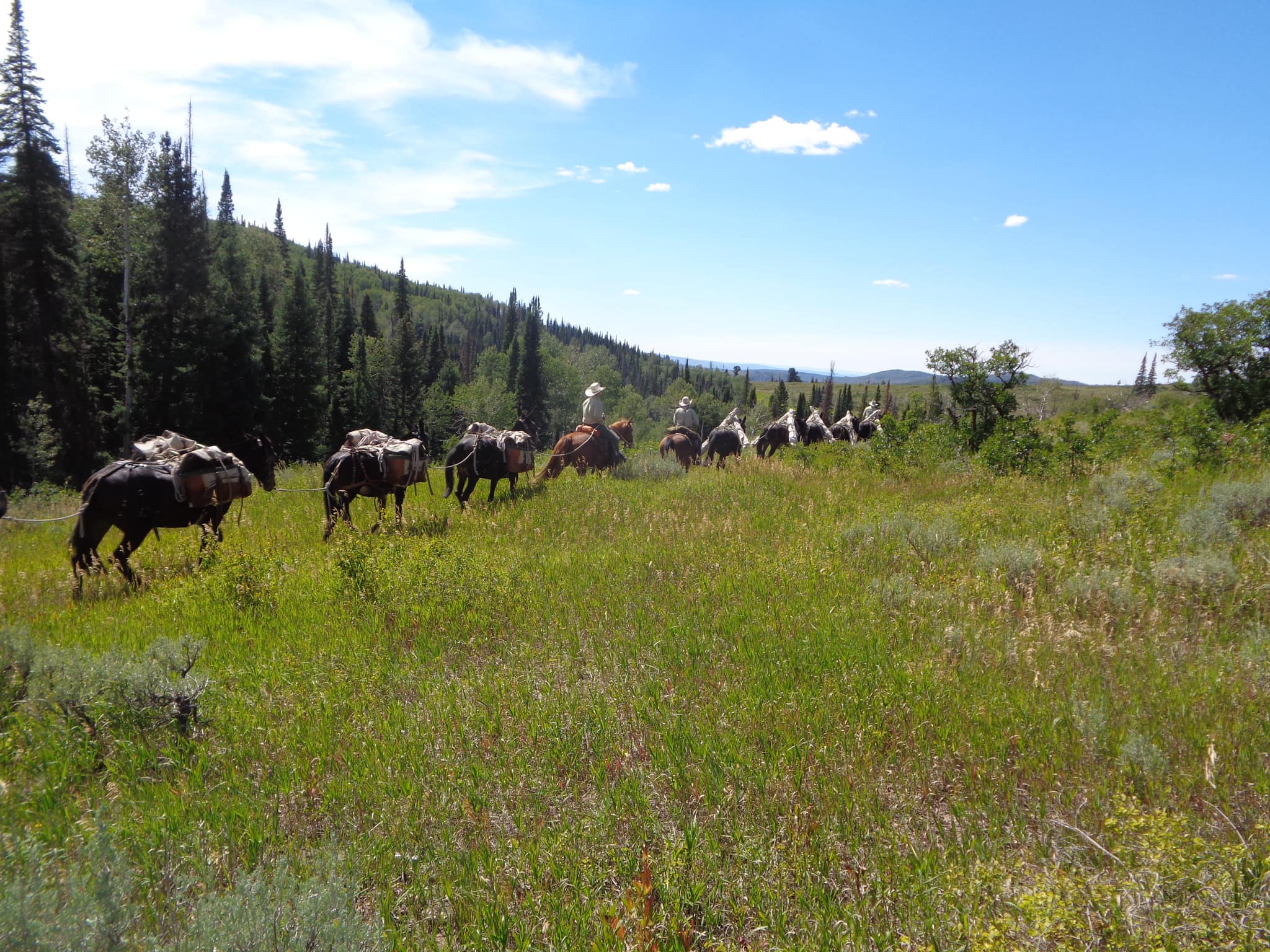Below are the words of Stephen Winslow, conservation projects manager for the Rocky Mountain Elk Foundation’s Denver Mile High Chapter.
On Saturday, July 15th, 14 Colorado RMEF volunteers traveled to Meeker for a new and challenging conservation project in the state. It came together with the help of Colorado Parks and Wildlife (CPW) Commissioner Marie Haskett, who is one of hunters’ greatest advocates on the Commission today. The CPW Commission is the most powerful body with respect to wildlife management in Colorado. It makes the final decision on tag numbers, tag allocations, season setting, predator management, CPW budgeting, etc. So, this project was truly an incredible opportunity for us as sportsmen to demonstrate our commitment to the future of wildlife and conservation in our state!
 The location of the project, the White River National Forest in Northwest Colorado, was particularly noteworthy this year. This area is one of the most productive and well-known elk areas in Colorado. Each fall, thousands of hunters flock to the region in pursuit of elk, mule deer and antelope. However, the winter of 2022-2023 was one of the worst on record in the area. The region saw unprecedented winterkill, and tag numbers and season dates were cut dramatically in response. So, we were thrilled at the opportunity to help these critical herds in any way possible. A Utah State University study in 2005 conducted near the project site suggested that barbed wire fences kill approximately 1.1 animals per mile per year, so we knew we could do some real good by removing old unused fencing on public land through prime deer and elk habitat!
The location of the project, the White River National Forest in Northwest Colorado, was particularly noteworthy this year. This area is one of the most productive and well-known elk areas in Colorado. Each fall, thousands of hunters flock to the region in pursuit of elk, mule deer and antelope. However, the winter of 2022-2023 was one of the worst on record in the area. The region saw unprecedented winterkill, and tag numbers and season dates were cut dramatically in response. So, we were thrilled at the opportunity to help these critical herds in any way possible. A Utah State University study in 2005 conducted near the project site suggested that barbed wire fences kill approximately 1.1 animals per mile per year, so we knew we could do some real good by removing old unused fencing on public land through prime deer and elk habitat!
Most of the volunteers were coming out from the front range, so the trip started with a long 4+ hour drive on Friday evening to the camp site. After some brief introductions, we were in bed early for what we knew would be a long day of fence pulling. On the morning of July 15th, we met up with Commissioner Haskett, who brought a few friends of her own, as well as a pack string of horses to help us get into the project site.
The project site was deep into the forest – over three miles and 1,500-foot climb from the trailhead! But our volunteers were not deterred and we rode and hiked our way in. After reconvening at the work site, we rested while discussing safety and our plan for the day.
 The work was grueling. The barbed wire fence was covered by numerous downed trees and meandered over steep terrain and through thick forest. The mosquitoes were brutal and the temperatures soared into the upper 80s. But we worked on, and by the end of the day we had removed approximately one mile of barbed wire fence from the area. I suspect the mileage could have been double or triple that figure, had it not been for the downed trees and difficult terrain!
The work was grueling. The barbed wire fence was covered by numerous downed trees and meandered over steep terrain and through thick forest. The mosquitoes were brutal and the temperatures soared into the upper 80s. But we worked on, and by the end of the day we had removed approximately one mile of barbed wire fence from the area. I suspect the mileage could have been double or triple that figure, had it not been for the downed trees and difficult terrain!
By the time we hiked out that evening, we were exhausted, but immensely proud of what we had accomplished. Moods were so high, in fact, that one of our long-time volunteers got engaged to be married on the hike out!
Not only did we do a lot for wildlife in the state, but had we also demonstrated sportsmen and women’s commitment to conservation in Colorado in front of an important audience. In the July 20-21 commission meeting, Commissioner Haskett used her opening comments to highlight the work that she and the RMEF volunteers had accomplished the week prior. In a state with rapidly changing values and demographics, this was an incredible opportunity for us to once again prove, in front of a large and powerful audience that “Hunting is Conservation!”

Click here to see more photos.
(Photo credit: Stephen Winslow/White River National Forest)
